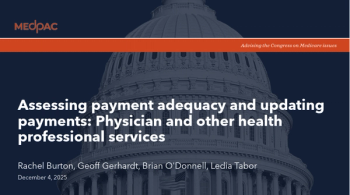
Primary care is important, but what exactly is it?
Various state, regional and national definitions share some common attributes, but don’t all measure the same things; comment period is open now.
Federal researchers hope a standardized definition of primary care will improve measurement and delivery of it.
The U.S.
“The ability to estimate and track primary care spending using the same standard across all 50 states can allow for benchmarking and comparisons, which is currently not possible with disparate estimation methods, and can help ensure that we have a robust, high-quality primary care foundation in the United States,” said the brief, led by AHRQ Director Robert Otto Valdez, PhD, MHSA.
Physicians, other clinicians, and health care leaders agree primary care is important. AHRQ cited the 2021 National Academies of Sciences, Engineering, and Medicine (NASEM) report with “abundant evidence” that investing in primary care leads to a healthier population and health care equity at a cheaper cost.
What is it?
AHRQ researchers identified 65 primary care spending estimates, prepared by state governments, a state-based foundation, regional and national estimators, and the U.S. Veterans Health Administration. The reports were created from 2010 to 2021.
Definitions of primary care generally involve at least three factors:
- Who is providing the care
- Location
- Types of services
Generally analysts agree family practice, general pediatric, and general internal medicine physicians provide primary care. Most estimates include some nurse practitioners (NPS) and physician assistants (PAs). There is more variation in counting other clinicians such as obstetrician/gynecologists (OB/GYNs), homeopaths and naturopaths, and behavioral health experts.
When defining primary care, there is variation among the settings and services, with some commonly included in estimates. “However, there is a long list that are included in some estimates and excluded in others,” the technical brief said.
The lack of a common definition has ramifications for finances and patients.
Estimates vary when researchers quantify primary care costs within total U.S. health care spending. For example, narrow definitions peg the figure at 3.1% to 6.1%, while the estimates range from 3.5% to 24.3% under broader definitions. The NASEM report estimated the nation spends 6% to 9% of the health care dollar on primary care.
But without a consistent definition, “it is not possible for an outside organization to look at drawing comparisons across estimates and examining how variations in primary care spending is associated with health outcomes in the United States,” the technical brief said.
Developing a standardized, national definition of primary care spending will involve time, infrastructure, and political will, the AHRQ report said. The researchers identified a number of data sources to use in compiling a national standard and spending estimates for the 50 states.
Have your say
AHRQ has a public comment period open through Oct. 27 on the draft technical brief. Comments may be submitted online at
Newsletter
Stay informed and empowered with Medical Economics enewsletter, delivering expert insights, financial strategies, practice management tips and technology trends — tailored for today’s physicians.















